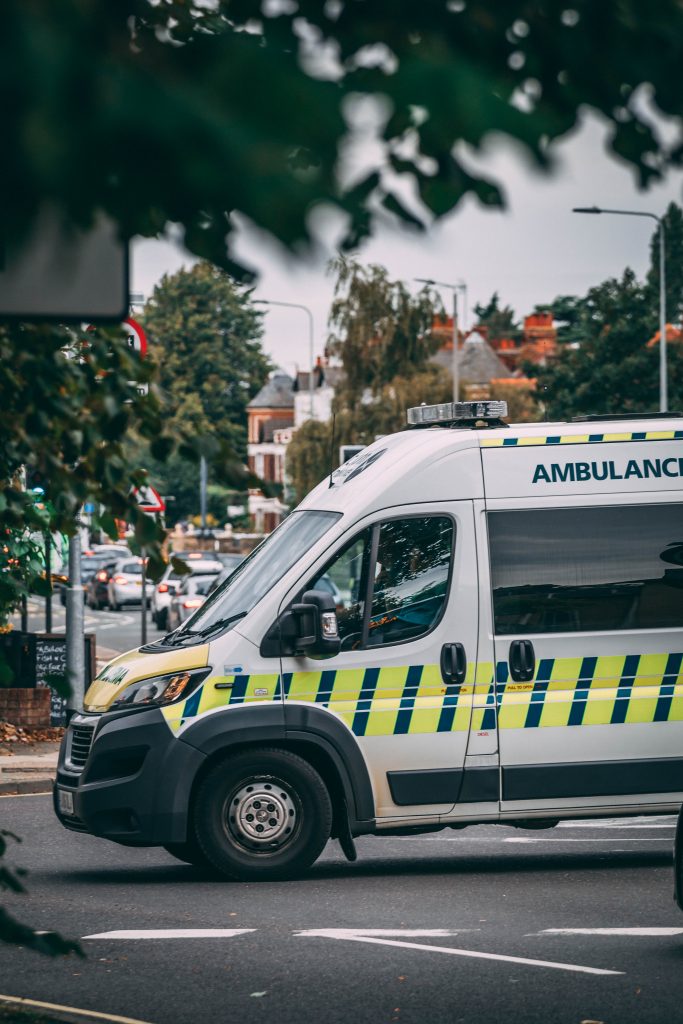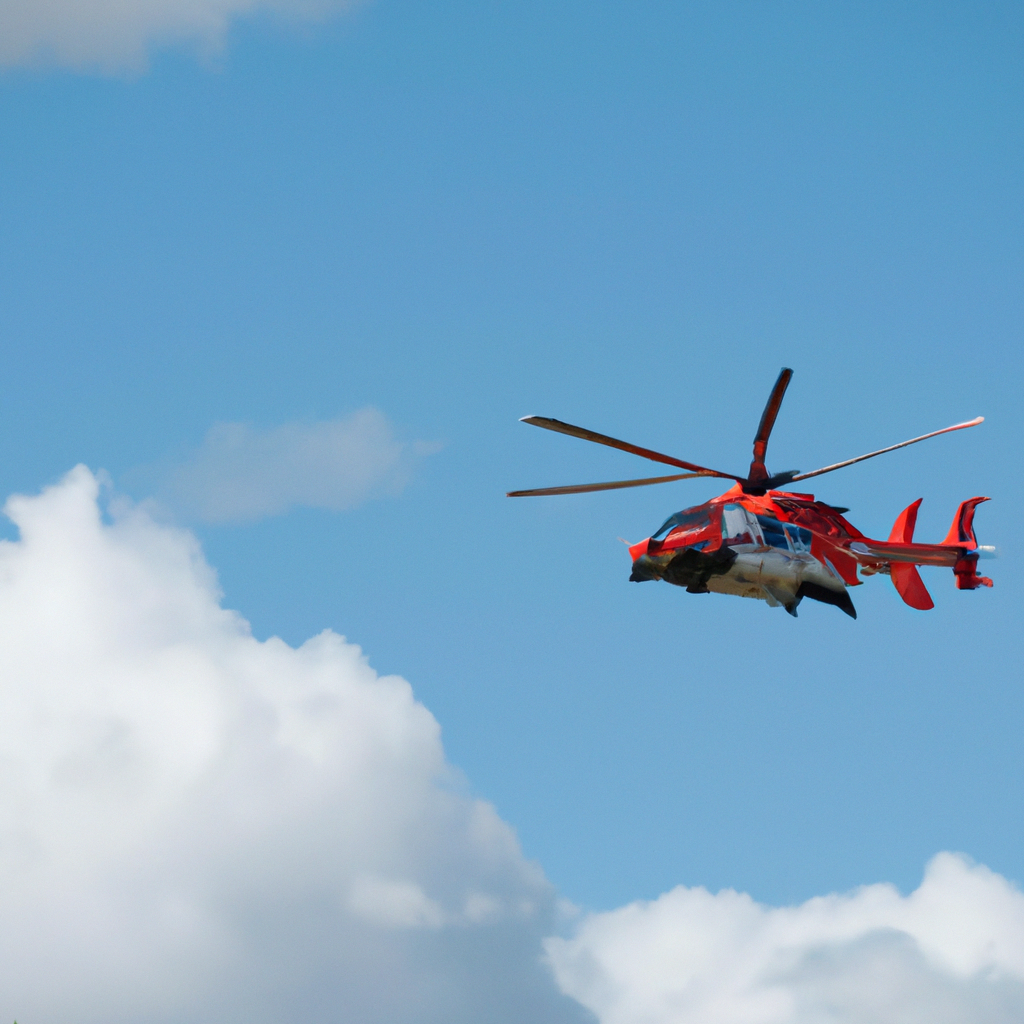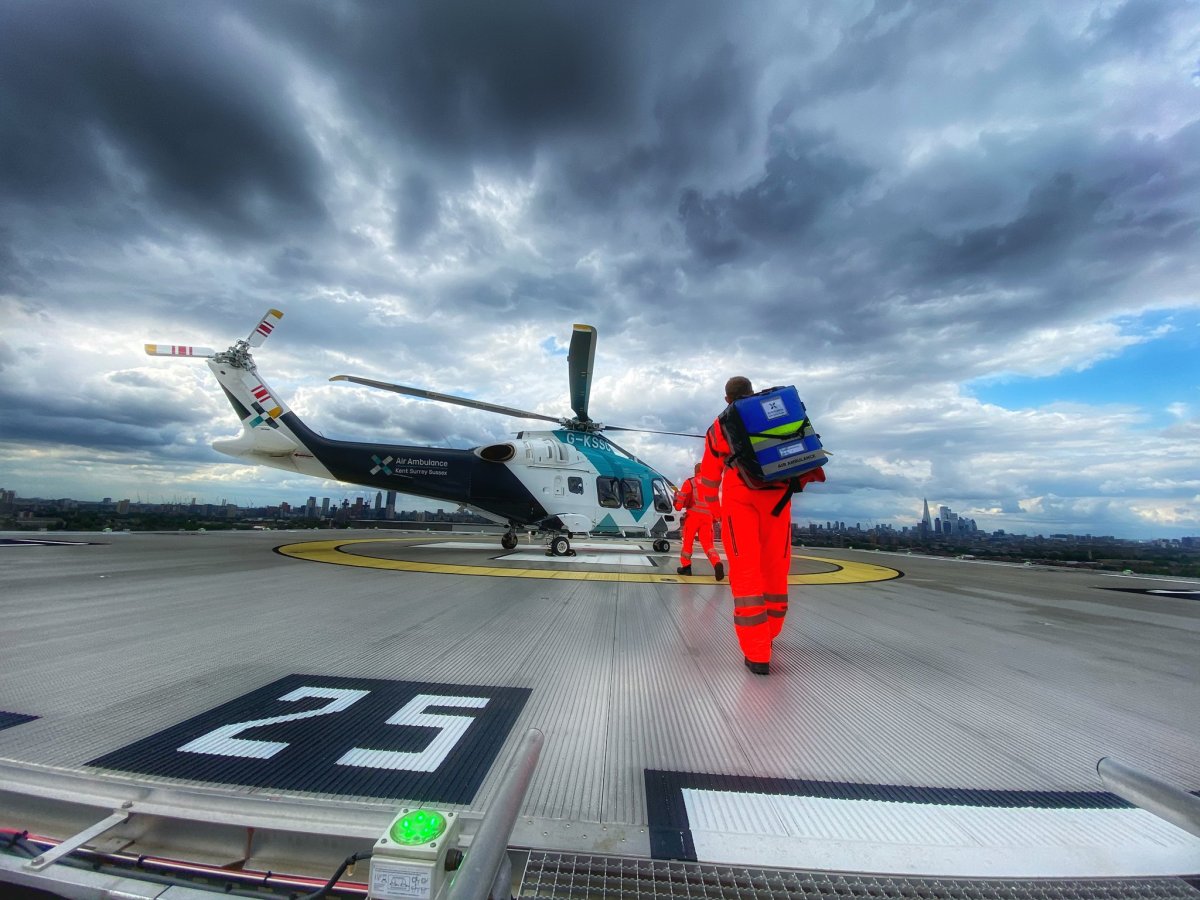So you’re dealing with a medical emergency and the situation calls for an air ambulance. Now, you might be wondering how you will afford this service because let’s face it, air ambulance services can be quite expensive. Well, fret not! In this article, we’ll be discussing all the resources and support available to you when it comes to financial assistance for air ambulance patients. From government programs to non-profit organizations, there are numerous avenues you can explore to alleviate the financial burden of air ambulance transportation. So sit tight and let’s dive into the world of financial assistance for air ambulance patients!

Financial Assistance Programs
If you or a loved one are in need of air ambulance services, the cost can be a major concern. Thankfully, there are various financial assistance programs available to help ease the burden. In this article, we will explore different resources and support options that can help make air ambulance services more accessible and affordable for those in need.
Medical Insurance Coverage
One of the first avenues to explore when seeking financial assistance for air ambulance services is your medical insurance coverage. Whether you have private insurance or are enrolled in a government program, such as Medicaid or Medicare, it’s important to understand what expenses are covered. Reach out to your insurance provider to clarify which air ambulance services are covered, what the limitations are, and if any pre-authorization is required.
Medicaid
Medicaid is a government-funded program that provides healthcare coverage for individuals and families with low incomes. Depending on your state’s Medicaid program, coverage for air ambulance services may be included. It’s essential to consult with your state Medicaid office to determine the specific eligibility requirements and coverage options for air ambulance transportation.
Medicare
Medicare, a federal health insurance program primarily for individuals aged 65 and older, also offers coverage for air ambulance services under certain circumstances. To qualify for coverage, the air ambulance transport must be deemed medically necessary and meet specific criteria outlined by Medicare. Contact your local Medicare office or visit their website to understand the eligibility requirements and coverage details.
Veterans Affairs Benefits
If you are a veteran, you may be eligible for financial assistance through the Veterans Affairs (VA) benefits program. The VA provides healthcare coverage, including air ambulance services, to eligible veterans. Reach out to your local VA office to determine your eligibility and to learn more about the coverage options available to you.
Workers’ Compensation
For individuals who require air ambulance services due to a work-related injury or illness, workers’ compensation may cover the associated expenses. If you have been injured or fallen ill while on the job, it’s crucial to report the incident to your employer and file a workers’ compensation claim promptly. This will initiate the process of determining if air ambulance transportation is medically necessary and covered under your workers’ compensation insurance.
Charitable Organizations
Several charitable organizations are dedicated to assisting individuals who require air ambulance services but struggle with the financial burden. These organizations provide financial assistance, grants, or scholarships to help cover the cost of air ambulance transportation. Some examples include the Air Care Alliance, Wings of Mercy, and Angel Flight. Research and reach out to these organizations to see if you meet their eligibility criteria and can benefit from their support.
Hospital Financial Assistance
In addition to the various programs mentioned above, hospitals often have their own financial assistance programs to help patients afford air ambulance services. Let’s explore some of these programs in more detail:
Charity Care Programs
Many hospitals offer charity care programs to provide free or discounted medical services to individuals who meet the income and asset requirements. These programs can include coverage for air ambulance transportation, ensuring that individuals in need can receive the necessary medical care without the overwhelming financial burden.
Sliding Fee Scales
Hospitals may also utilize sliding fee scales to determine the amount patients are responsible for paying based on their income and financial situation. This means that the cost of air ambulance services can be adjusted based on a patient’s ability to pay. It’s essential to inquire about these sliding fee scales and determine if you qualify for reduced fees or financial assistance.
Financial Counseling Services
If you are unsure of how to navigate the financial aspects of air ambulance services, many hospitals offer financial counseling services. These counselors can provide guidance and assistance in understanding your financial options, including available assistance programs and potential payment arrangements. Reach out to your hospital’s financial department or patient advocacy office to inquire about these services.

Government Assistance Programs
To further alleviate the financial burden of air ambulance services, several government assistance programs provide support. Let’s take a closer look at some of these programs:
Medicaid
As mentioned earlier, Medicaid is a government-funded program that offers healthcare coverage for individuals and families with low incomes. If you are not already enrolled in Medicaid, it’s worth exploring whether you meet the eligibility requirements in your state. If eligible, air ambulance services may be covered or partially covered under Medicaid, significantly reducing your out-of-pocket expenses.
Medicare
Medicare, available for individuals aged 65 and older, along with certain individuals with disabilities, provides coverage for air ambulance services under specific circumstances. To determine if you are eligible for Medicare and its coverage options for air ambulance transportation, contact your local Medicare office or visit their website for detailed information.
Social Security Disability Insurance (SSDI)
If you have a disability and are unable to work, you may be eligible for Social Security Disability Insurance (SSDI). In addition to providing financial assistance for living expenses, SSDI may also cover certain healthcare expenses, including air ambulance services. Learn more about the eligibility requirements and coverage options by reaching out to your local Social Security office or visiting their website.
Supplemental Security Income (SSI)
Supplemental Security Income (SSI) is another government program that provides financial assistance to individuals with limited income and resources. If you meet the eligibility criteria for SSI, you may be able to receive assistance with medical expenses, including air ambulance services. Contact your local Social Security office or visit their website to understand if you qualify and what coverage options are available to you.
Non-Governmental Organizations
In addition to government assistance programs, various non-governmental organizations (NGOs) focus on providing financial assistance and support for air ambulance services. Here are a few NGOs that offer assistance to those in need:
Angel Flight
Angel Flight is an organization that arranges free air transportation for those in need of medical treatment far from their home. They connect volunteer pilots with patients, providing them with much-needed air ambulance services without the financial burden. Visit their website to explore their services and see if you qualify for assistance.
Air Care Alliance
Air Care Alliance is another organization that connects patients in need with volunteer pilots and aircraft owners. They work with various charitable aviation organizations to facilitate air ambulance services for patients who require specialized medical care. Reach out to Air Care Alliance to learn more about their services and eligibility requirements.
National Patient Air Transport Helpline
The National Patient Air Transport Helpline is a resource for individuals seeking air ambulance services. They provide assistance in finding suitable air transportation options, including financial assistance programs and insurance coverage. Contact their helpline or visit their website to get guidance on accessing air ambulance services and the available financial support.
Wings of Mercy
Wings of Mercy is a nonprofit organization that provides free air transportation to patients who need to travel for medical treatment. Their volunteer pilots generously donate their time and aircraft to ensure that individuals requiring air ambulance services can access the necessary care without worrying about the financial burden. Explore their website for more information on their services and eligibility guidelines.

Travel Insurance
When planning for air ambulance services, considering travel insurance is essential. Travel insurance can provide coverage for emergency medical transportation, including air ambulance services, when traveling far from home. Let’s dive into some key aspects of travel insurance as it pertains to air ambulance expenses:
Understanding Travel Insurance
Travel insurance is designed to protect travelers from unexpected events that may occur during their trip. It typically covers expenses such as trip cancellation, medical emergencies, and baggage loss or delays. When it comes to air ambulance services, travel insurance can provide coverage for emergency medical transportation back to your home country or to a suitable medical facility for treatment.
Coverage for Air Ambulance Services
When selecting a travel insurance plan, it’s critical to review the policy details to ensure that air ambulance services are covered. Look for specific mention of air ambulance or emergency medical transportation in the policy documents. Additionally, check if there are any exclusions or limitations that may impact coverage for air ambulance services.
Choosing the Right Travel Insurance Plan
To choose the right travel insurance plan, consider your specific needs and travel circumstances. Determine if the coverage for air ambulance services is included in the policy, and if so, what the limits are. Carefully review the terms and conditions, including any deductible or co-payment requirements. Comparing multiple plans and seeking expert advice can help you make an informed decision.
Crowdfunding Platforms
If you are facing significant expenses for air ambulance services, crowdfunding platforms can offer an alternative means of financial support. These online platforms allow individuals to raise funds from friends, family, and even strangers who are willing to donate. Here are some popular crowdfunding platforms to consider:
GoFundMe
GoFundMe is one of the most well-known crowdfunding platforms. It provides a user-friendly interface to create a fundraising campaign, share your story, and collect donations. By leveraging your network and spreading the word through social media, you can gather support to cover the costs of air ambulance services.
Kickstarter
While Kickstarter is predominantly known for funding creative projects, it can also be used for personal fundraising purposes. If you have a unique story or a specific project related to your need for air ambulance services, Kickstarter can be an effective platform to reach a wider audience and receive financial assistance.
Indiegogo
Indiegogo is another crowdfunding platform that enables individuals to raise funds for various causes, including medical expenses. You can create a campaign and share your story to attract donors who are willing to contribute to your air ambulance service costs. Explore Indiegogo’s features and community to see if it aligns with your fundraising needs.
Patient Assistance Programs
In addition to insurance coverage and crowdfunding, there are specific patient assistance programs designed to help individuals with their medical expenses, including the cost of air ambulance services. Let’s examine some of these programs:
Pharmaceutical Company Assistance Programs
Many pharmaceutical companies offer assistance programs to help patients with the cost of their medications. These programs may also extend to cover certain healthcare services, including air ambulance transportation. Contact the pharmaceutical company that manufactures any medications you are taking or visit their website to explore if they offer assistance for air ambulance services.
Non-Profit Assistance Programs
Various non-profit organizations dedicate themselves to providing financial assistance to individuals who need help with their medical expenses. These organizations often have specific programs or grants to support individuals requiring air ambulance services. Research local and national non-profit entities to determine if they provide financial aid for air ambulance transportation.
Government Assistance Programs
In addition to the government programs mentioned earlier, there may be other assistance programs available in your area specifically catered to patients requiring air ambulance services. Contact your local healthcare agencies, social services offices, or community organizations to inquire about any additional government-sponsored assistance programs.
State-Specific Assistance Programs
Each state within the United States may have its own assistance programs to help individuals afford air ambulance services. Here are two commonly available state-specific programs to consider:
State Medicaid Programs
State Medicaid programs often have their own guidelines and coverage options for air ambulance services. It’s essential to contact your state Medicaid office or visit their website to determine the specific eligibility requirements and coverage details related to air ambulance transportation.
Hospital Financial Assistance Programs
Many hospitals have their own financial assistance programs tailored to the needs of their community. These programs may provide financial aid for air ambulance services, ensuring that patients can receive the necessary care without facing overwhelming debts. Reach out to your local hospital to inquire about their specific financial assistance programs and eligibility criteria.

Alternative Funding Options
If the assistance programs mentioned above are not suitable or do not cover all your expenses, there are alternative funding options available to help you afford air ambulance services.
Personal Finance Options
Considering personal finance options such as personal loans, home equity loans, or refinancing can help cover the expenses of air ambulance services. However, it’s essential to carefully evaluate the terms, interest rates, and repayment terms associated with these financial products. Consult with a financial advisor or loan specialist to explore these options and determine the best fit for your situation.
Medical Loans
Medical loans are specifically designed to help individuals cover their medical expenses. These loans often offer flexible repayment terms and competitive interest rates. Research different medical loan providers to find the most suitable option for financing your air ambulance services.
Credit Cards
Using credit cards to pay for air ambulance services may be an option if your credit limit allows for it. Utilizing credit cards can provide immediate funding, but it’s important to consider the interest rates and fees associated with these cards. Be cautious when relying solely on credit cards, as accumulating debt can become burdensome in the long run.
Seeking Legal Help
In certain cases, seeking legal help may be necessary, especially if there are disputes with insurance providers, personal injury claims, or medical malpractice issues. Legal assistance can ensure that you receive the compensation and support you deserve. Let’s explore some scenarios where legal help may be beneficial:
Personal Injury Claims
If your need for air ambulance services is due to a personal injury caused by someone else’s negligence, pursuing a personal injury claim may be necessary. By working with an experienced personal injury attorney, you can seek compensation for medical expenses, including air ambulance services, as well as lost wages, pain and suffering, and any other damages caused by the injury.
Medical Malpractice Claims
If you believe that medical negligence or errors have led to your need for air ambulance services, consulting with a medical malpractice attorney is crucial. These attorneys specialize in handling claims against medical professionals or institutions and can help you pursue compensation for your medical expenses, emotional distress, and other damages that resulted from the negligence.
Insurance Disputes
If your insurance provider is denying coverage for air ambulance services that you believe should be covered, it may be necessary to seek legal assistance. An insurance dispute lawyer can guide you through the process of resolving the disagreement, helping you understand your rights and potential legal recourse.
In conclusion, the cost of air ambulance services can be overwhelming, but there are various financial assistance programs, resources, and support options available to help alleviate the burden. Whether through insurance coverage, government assistance programs, non-governmental organizations, travel insurance, crowdfunding, patient assistance programs, state-specific assistance programs, alternative funding options, or seeking legal help, there are avenues to explore and options to consider. Remember to thoroughly research and evaluate the available resources to find the best fit for your specific situation.



